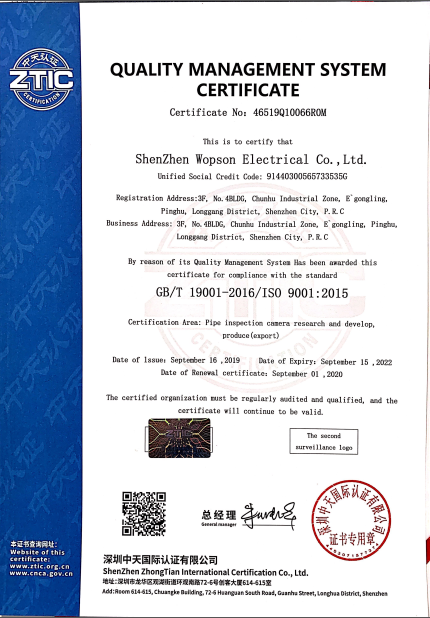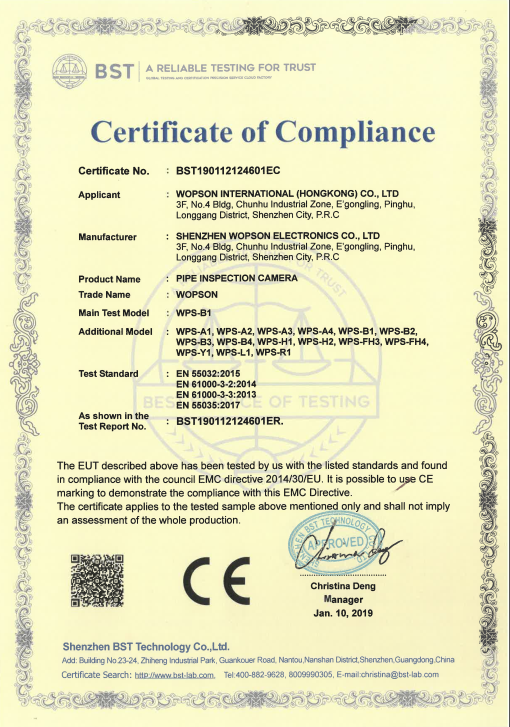Product Categories
-
- FH FHD pipe sewer inspection camera(17)
- H High definition drain sewer camera(11)
- A Simplified Pipe inspection camera(69)
- B Handheld Pipe inspection camera(79)
- PT Pan tilt Pipe inspection camera(17)
- L Telescope pole inspection camera(17)
- R Underwater inspection camera(15)
- Y Chimney inspection camera(15)
- T&R 512hz locator(12)
- T 512hz transmitter(12)
- digital locator(0)
- Wopson pipe camera(0)
- pipe probe(1)
- sewer inspection camera(10)
- drain & sewer services(0)
- pipe receiver(0)
- CCTV drain survey(0)
- drain inspection camera(0)
- pipeline video(13)
- inspection robot(0)
- pipe location(0)
- plumbing detector(13)
Contact Details
-
- Email : mary@wopson.com
- Phone : +86 16670203501/ 755 84691436 / HK +(852)6876 4558
- Fax : +86 755 84692156
- Address : Room E5,Unit F On 4th Floor ,Block E, East Sun Centre, No.16 Shing Yip Street, Kowloon
News
-
Common pipe cleaning method
2018-10-22
The choice of pipeline cleaning method should be determined according to the type of pipeline, the nature of dirt, the source of cleaning materials, construction environment and public engineering conditions. This includes physical and chemical cleaning techniques as well as PIG industry pigging techniques.
1.Physical cleaning technique
The technical principle of pipeline physical cleaning is to use physical force such as heat, ultrasonic wave, pressure and electrolytic force on the inner wall of the pipeline so that dirt can be separated from the wall, so as to achieve the purpose of cleaning. At present, the commonly used physical cleaning methods of pipelines mainly include: liquid flushing, steam blowing, gas blowing, sand blasting, shot blasting treatment, mechanical cleaning, and the widely used physical cleaning methods include: high-pressure jet cleaning technology, bead blowing and ball blowing.
2. Chemical cleaning technique
Chemical cleaning of pipeline is to clean the dirt in the pipeline by chemical cleaning agent, corrosion inhibitor chemical combination, REDOX, complexation and other chemical reactions. Of course, the cleaning process will also use other auxiliary washing forces, so that the pipeline cleaning to the best effect.
3. PIG industry pigging technology
PIG industry pigging technology is widely used in various pipelines, oil and gas pipelines, and so on. Use the power generated by the pump to push the fluid, drive the pig to push forward inside the pipe, and discharge the dirt deposited in the pipe outside the pipe, so as to achieve the purpose of cleaning.

